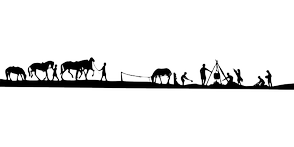Hubble Space Telescope projected was relegated to storage after space shuttle Challenger's January 1986 breakup and then restarted in April 1990.
explosion of space shuttle Challenger shortly after launch Tuesday, Jan. 28, 1986; NASA ID: S86-38989: Not subject to copyright, via NASA Image and Video Library @ https://images.nasa.gov/details-S86-38989
Chandra X-ray Observatory: the most sensitive X-ray telescope ever built
Third of NASA's four Great Observatories honors Punjabi American astrophysicist Subrahmanyan Chandrasekhar (October 19, 1910 – August 21, 1995).
image courtesy NASA/CXC/NGST (NASA/Chandra X-Ray Center/Next Generation Space Telescope: Not subject to copyright, via NASA Goddard Space Flight Center (GSFC) Scientific Visualization Studio (SVS) @ https://svs.gsfc.nasa.gov/cgi-bin/details.cgi?aid=11185
Hubble Space Telescope in high orbit 600 kilometers above the Earth
image release date Wednesday, January 26, 2011, 17:33: European Space Agency, CC BY 4.0, via Wikimedia Commons @ https://commons.wikimedia.org/wiki/File:The_Hubble_Space_Telescope_in_orbit.tif; European Space Agency, CC BY 4.0, via ESA Hubble @ https://esahubble.org/images/hubble_in_orbit1/; CC BY 4.0, via ESA/Hubble @ https://esahubble.org/images/hubble_in_orbit1/
Two asteroids (272 Dickinson, 5272 Dicksinson) are named after astronomy author and astrophotographer Terence Dickinson.
American astronomer Edward "Ted" L. G. Bowell discovered the main-belt asteroid, designated 1981 QH2, at Anderson Mesa Station, Coconino County, north central Arizona.
5272 Dickinson on Sunday, Aug. 30, 1981, the date of the asteroid's discovery: May be used for any purpose without prior permission, via NASA JPL Solar System Dynamics (SSD) @ https://ssd.jpl.nasa.gov/tools/sbdb_lookup.html#/?sstr=5272&view=VOP
Hubble's most famous image: iconic Eagle Nebula's "Pillars of Creation" as 1995 original (left) and as 2014 update
Near-infrared light photography transforms 2014 update of 1995 pillars into eerie, wispy silhouettes against a background of myriad stars. NASA/ESA/Hubble Heritage Team (STScI/AURA)/J. Hester, P. Scowen (Arizona State U.)
NASA Hubble Mission Team, Goddard Space Flight Center, "Hubble Goes High-Definition to Revisit Iconic 'Pillars of Creation'", NASA article Jan. 5, 2015: Generally not subject to copyright in the United States, via NASA @ https://www.nasa.gov/content/goddard/hubble-goes-high-definition-to-revisit-iconic-pillars-of-creation















 Are Hawaiian Huakai Po Nightmarchers Avenging Halloween Thursday?on 10/02/2024
Are Hawaiian Huakai Po Nightmarchers Avenging Halloween Thursday?on 10/02/2024
 Mailing Addresses for 2023 Form 4868 Extending 1040 and 1040SR April 15, 2024, Due Dateon 04/15/2024
Mailing Addresses for 2023 Form 4868 Extending 1040 and 1040SR April 15, 2024, Due Dateon 04/15/2024
 Mailing Addresses for 2023 Forms 1040 and 1040SR Filed in 2024on 04/15/2024
Mailing Addresses for 2023 Forms 1040 and 1040SR Filed in 2024on 04/15/2024
 Mailing Addresses for 2022 Form 4868 Extending 1040 and 1040SR April 18, 2023, Due Dateon 04/13/2023
Mailing Addresses for 2022 Form 4868 Extending 1040 and 1040SR April 18, 2023, Due Dateon 04/13/2023



Comments
The Hubble-telescope namesake, Edwin Powell Hubble (Nov. 20, 1889-Sep. 26, 1953), amazes with all his accomplishments -- abridged in my introduction -- even as he particularly astounds about our universe's expansion rate.
Can there already be, or could there soon be, Hubble or Hubble source-like images of that expansion rate?
happynutritionist, Yes, Hubble's images are super remarkable and extend human parameters for "seeing" deep and far into this amazing universe.
It's simply remarkable to see the images that have been captured by Hubble, what an amazing universe we live in!